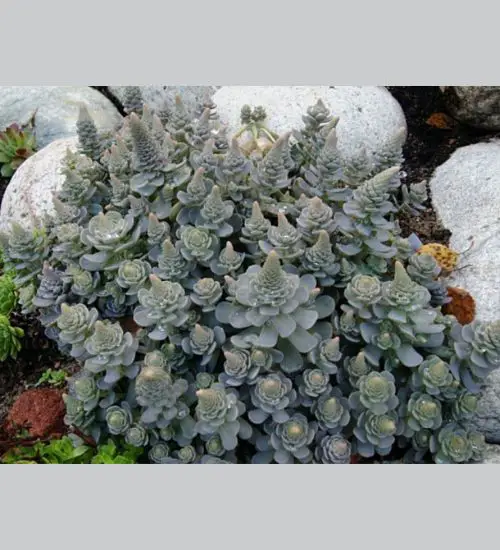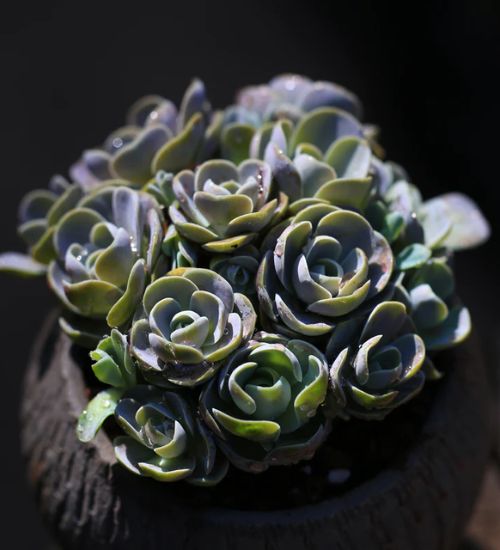Sun: Full sun to light shade
Water: Typical water needs for a succulent
Temperature: Zone 6a from -10° F to -5° F (-23.3 ° C to -20.6° C) to Zone 10b from 35° F to 40° F (1.7° C to 4.4° C)
Winter Survival: Cold hardy
Propagation: seeds
Flower: in the Fall
Flower Type: white
Toxic: Generally non-toxic to humans and animals
Dormant: winter
Space Requirement: Indoors & Outdoors
Common Problems: Plants may rot if overwatered, pests
Where to buy Orostachys Boehmeri?
Basc Care for Orostachys Boehmeri
Watering
You can water your succulent more than often in extreme conditions but make sure that the soil is completely dry before watering your succulent again.
One simple tip for you is that you can use some online apps to check the soil status before you go water your succulents. I would recommend the ThePlantsCheck app, it has some nice features there.
Fertilizing
Only feed this succulent during its active growing seasons which means winter. Use the right fertilizer applied in the right amounts. Applying half-strength balanced fertilizer every month or so is recommended for optimal results.
Do not fertilize during winter as the plant is dormant.
Sun & Location Requirements for "duncecap, Chinese Dunce Cap"
Placing "duncecap, Chinese Dunce Cap" in full sun to light shade is key for its growth and health. Look for a spot that gets around 6 hours of direct sunlight each day, but also offers plenty of shade during the hottest parts of the day.
As per this succulent profile, it is only able to stay healthy when the environment temperature is above the range of zone 6a from -10° F to -5° F (-23.3 ° C to -20.6° C).
Orostachys Boehmeri is known for its cold hardiness and ability to survive in frigid winter temperatures. This succulent's thick leaves and stems help it retain moisture, aiding it in surviving freezing temperatures. Additionally, the succulent's attractive foliage offers a festive touch to any garden in cold climates. With its ability to survive down to 0°F, "duncecap, Chinese Dunce Cap" is an excellent choice for areas with frosty winters.
Any succulents in the group will need a medium space to grow. You can place your pot at your table or window. Since this plant needs more space than mini succulents, you should consider do not plant them together with other succulents/plants.
Orostachys Boehmeri also benefits from some indirect light throughout the day as well, so make sure you give it enough space to soak up light without becoming too exposed to heat.
Propagation
Orostachys Boehmeri can be propagated from seeds. Signs of a good seed is one that is plump, dark in color and slightly sticky. To propagate X from seed, one must prepare a soil mixture of well-draining potting mix, sow the seeds evenly and lightly press them into the surface. Lastly, gently water the soil using a spray bottle and place the container in bright but indirect light.
Toxicity

Orostachys Boehmeri is generally thought to be non-toxic for humans and animals. However, it is important to note that certain parts of the plant may contain toxins which can cause mild skin irritation if ingested or touched. For this reason, the plant should always be kept away from children and pets.
Pests and Diseases
Orostachys Boehmeri can be affected common pests and diseases like most of the other succulents such as aphids.
If you do spot any of pest signs, you can treat your succulent using below methods.
- Aphids: quarantine, clean infected plants, soapy water.
Besides that, to prevent serious health issues from happening, keep your succulent in a well-ventilated area and check it regularly for any signs of pests or health problems.


